#D-Finitive Comics
Explore tagged Tumblr posts
Link
0 notes
Text
Omg tysm for tagging me :D never did one of these before, let’s see 🌸
3 ships I like : Timebomb (Arcane), Ghostflower (Spiderverse) and the Ineffable Husbands (Good Omens)
First ship ever : I’d say Amu and Ikuto from Shugo Chara but not sure if they’re actually my first ship ever TwT
Last song : “La nuit n’en finit plus”by Petula Clark (I can’t get enough of it idk why)
Favorite childhood book : ooh well.. I actually have no idea 😭 I read so many things.. I guess I read the Asterix and Obelix comics a lot when I was little
Currently reading : fanfiction and that’s all I’ll say
Currently watching : Arcane for the millionth time
Currently consuming : not enough vitamin D
Currently craving : sleep, inner peace… and more interactions with my lovely moots :3🩷
Um I have no idea who to tag damn T^T uh no pressure guys ofc + you can jump in even if I didn’t tag you ^^
@artsy-buggy @aghostnamedclamity @immaculatemadonna23 @boozedaisies
Tagged by the lovely @jalapenobee!!! Hi Bee!! <3
3 ships i like: LoidxYor from Spy x Family and just all my OC ships who have been living in my head rent free for years. Mainly AdamxOlivia (EverHart), MarigoldxSolomon (MariSol) and HollyxNate (Hate). I could talk about them for hours so if anyone has time to waste...
first ship ever: Jeroen and Mara from Het Huis Anubis (the original Dutch/Flemish version of House of Anubis). The enemies to lovers was amazing!!! And then they didn't happen!!! It's been like 18 years and I'm still bitter
last song: Only Me When I'm With You - Taylor Swift
favorite childhood book: I honestly have no idea... But my mum used to read from a Winnie The Pooh book when I was small and there was this poem in there about Piglet going on vacation and going to England and France and Africa and all... And would still be back that evening and I still know it by heart :)
currently reading: My Vampire Plus-One - Jenna Levine
currently watching: A advent calendar unboxing on youtube. I haven't really watched any shows lately (if anyone has recommendations, let me know!)
currently consuming: Tea
currently craving: Some peace and quiet!!
Tagging the following lovely people!!
@silversoulstardust @actually-the-devil @currentlyinflames @keeeegs
451 notes
·
View notes
Photo



Sorry about the lack of posts. I was just developing some concepts for the next few years.
#The Lonesome Pirate#Get There Quick#summer kamperz#DiFFered Animations#D-Finitive Comics#defrehn#Aidan DeFrehn#2000s aesthetic
9 notes
·
View notes
Photo

“Don’t Talk to me until I’ve had my morning coffee.” -Elle (Though not the originator)
7 notes
·
View notes
Quote
There are no theorems in category theory.
Emily Riehl, Category Theory In Context
Mathematicians often tell her this; hence the book.
If I had to summarise her views in one sentence, it would be:
Everything is an adjunction.
I also like the division these mathematicians are making to her: essentially, a theorem is anything that solves Feynman’s challenge: by a series of clear, unsurprising steps, one arrives at an unexpected conclusion.
Examples for me include:
17 possible tessellations
6 ways to foliate a surface
27 lines on a cubic
1, 1, 1, 1, 1, 1, 28, 2, 8, 6, 992, 1, 3, 2, 16256, 2, 16, 16, 523264, 24, 8, 4 ways to link any-dimensional spheres.
the existence of sporadic groups
surprising rep-theory consequences of Young diagrams, Ferrers sequences, and so on (you could say the strangeness of integer partitions is really to blame here…)
59 icosahedra
8 geometric layouts
Books which are bristling with mathematical ideas of this kind include Montesinos on tessellations, Geometry and the Imagination (the original one), and Coxeter’s book on polyhedra (start with Baez on A-D-E if you want to follow my path). Moonshine and anything by Thurston or his students, I’ve found similarly flush with shockng content—quite different to what I thought mathematics would be like. (I had pictured something more like a formal logic book: row by row of symbols. But instead, the deeper I got into mathematics, the fewer the symbols and the more the surnames thanking the person who came up with some good idea.)
Note that a theorem is different here to some geometry — as in The Geometry of Schemes. The word geometry used in that sense, I feel, is to have a comprehensive enough vision of a subject to say how it “looks” — but the word theorem means the result is surprising or unintuitive.
This definition of a theorem, to me, presents a useful challenge to annoying pop-psychology that today lurks under the headings of Bayesianism, cognitive _______, behavioural econ/finance, and so on.
Following Buliga and Thurston to understand the nature of mathematical progress, within mathematics at least (where it’s clearer than elsewhere whether you understand something or not—compare to economic theory for example), there is a clear delination of what’s obvious and what’s not.
What is definitely not the case in mathematics, is that every logical or computable consequence of a set of definitions is computed and known immediately when the definitions are stated! You can look at a (particularly a good) mathematical exposition as walking you through the steps of which shifts in perspective you need to take to understand a conclusion. For example start with some group, then consider it as a topological object with a cohomology to get the centraliser. Or in Fourier analysis: re-present line-elements on a series of widening circles. Use hyperbolic geometry to learn about integers. Use stable commutator length (geometry) to learn about groups. Or read about Teichmüller stuff and mapping class groups because it’s the confluence of three rivers.
Sometimes mathematical explanations require fortitude (Gromov’s "energy") and sometimes a shift in perspective (Gromov’s (neg)"entropy").
This view of theorems should be contrasted to the disease of generalisation in mathematical culture. Citing two real-life grad students and a tenured professor in logic (one philosophical, one mathematical, the professor in computer science):
I like your distinction between hemi-toposes, demi-toposes, and semi-toposes
I care about hyper-reals, sur-reals, para-consistency, and so on
Abstract thought — like mathematicians do — is the best kind of thought.
(twitter.com/replicakill, the author of twitter.com/logicians, ragged on David Lewis by saying “What do mathematicians like?” “What do mathematicians think?” —— And Corey Mohler has done a wonderful job of mocking Platonism, which is how I guess the thirst for over-generalisation reaches non-mathematicians.)
Paul Halmos knew that cool examples beat generalisations for generalisation’s sake, as did V. I. Arnol’d. And it seems that the people a Harvard mathematician spends her time with make reasonable demands of a mathematical idea as well. It shouldn’t just contain previous theories; it should surprise. In Buliga’s Blake/Reynolds dispute, Blake wins hands down.
#category theory#theorems#J P May#J. P. May#Emily Riehl#topos theory#toposes#topoi#mathematics#maths#math#adjunctions#adjoint#adjoint functor#functors#Daniel Kan#Kan extensions#tensors#tensor product#���#1958#algebra#analytic philosophy#logicians#logic#William Blake#Joshua Reynolds
70 notes
·
View notes
Text
Big Hero 6 at 35
A review by Adam D. Jaspering
Big Hero 6 is the story of Hiro Hamada. Hiro is a 13 year-old prodigy with a particular aptitude for engineering, design, and computer programming. When he uncovers a nefarious plot happening in his own city, he takes it upon himself to stop it. He recruits several colleagues to assist, using their skills, discoveries and inventions to create a team of superheroes. Together, they set out to save lives and uncover the truth.

One of the key focal points of the movie occurs early on. Hiro invents a series of microbots, capable of moving, organizing, and creating mechanisms and mobile structures. The invention is so well-received, he earns the attention of two individuals. The first, Robert Callaghan, a professor at the local university. The second, Alistair Krei, CEO of a major tech industry.
Krei promises Hiro a fortune for his invention, setting him on a pathway to prosperity. Unburdened from financial obligations, he’s free to pursue science as he desires. Callaghan promises Hiro a pathway to enlightenment and fulfillment, through education. He insists pursuing science as a virtue, one that shouldn’t be compromised through corporate interests.
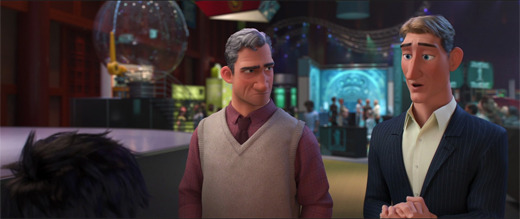
This decision of Hiro’s is only a minor plot point of the film. It introduces two authority figures who influence his actions later. But the ethical dilemmas of who owns scientific discoveries and innovations (and who profits) are never again alluded to. Which is ironic, as it’s a near perfect reflection on how Big Hero 6 came to fruition.
Bob Iger became CEO of Disney in 2005. This was an era when media markets were becoming more competitive and overcrowded. Advancements in technology made accessing and creating entertainment simple. The entertainment industry had more content than ever before. Audience attention was being divided, and advertisers were being choosy. The entertainment industry already had a finite source of income. It was now being divided into smaller and smaller slices.

As a result, companies were conglomerating. Strategic buy-outs could create an umbrella that served many organizations. Larger corporations had the wealth and resources to distribute and market content. Smaller creators and mid-tier companies had copyrighted works and creators. For a price, these mid-tier companies could survive in an inhospitable environment.
However, this also meant creators had to serve the whims of their corporate overlords. Artistic visions were sacrificed or censored for marketability. Worse still, it wasn’t uncommon for the buyouts to result in creators outright losing ownership of their creations. But lets focus on the platonic ideal of such a business model, not the capitalist nightmare it typically is.
Iger oversaw many acquisitions during his tenure as CEO. In 2006, he finalized the purchase of Pixar. In 2012, he purchased Lucasfilm, giving Disney the rights to Star Wars. In 2018, Disney acquired rival studio 20th Century Fox. They owned the company name, studios, and back catalog. The purchase of Fox also gave Disney Fox's stock portfolio. Disney now owned a majority stake in both National Geographic Global Networks and the streaming service Hulu.
Arguably, the most influential acquisition of Iger’s tenure was Marvel Entertainment in 2011. Founded in 1939, Marvel (then known as Timely Publications) has been one of America’s largest comic book publishers. Their characters and stories helped define the modern superhero archetype. Their influence on American culture has been indisputable.

Prior to Disney’s purchase, Marvel’s explorations into film had been hit-and-miss. Marvel was very protective of their trademarks, and offered little creative freedom to studios. Characters and stories were oversimplified to tell rudimentary interpretations of legacy characters. In addition, CGI technology was underdeveloped, but still expensive. Budgets were enormous, and often not worth the price tag.
Making a superhero movie in the late 20th and early 21st century was still a gamble. It was impossible to tell which movies would be successes, and which would fall apart during development. As such, Marvel hedged their bets and worked with many different studios. 20th Century Fox, Sony, Paramount, Columbia, Artisan Entertainment, and New Line Cinema all produced Marvel films. Ironically, Marvel never worked with Disney in this era.
It was 2008′s Iron Man that made Marvel a dominant force in film. Iron Man was the first Marvel film to be produced by Marvel Studios themselves. The paltry sums they earned from licensing their characters were now irrelevant. They could make millions from their own studio. The question was, for how long? Superhero films were still risky ventures. A few financial gambits would risk the entire company.
In 2007, Marvel’s total assets were roughly $700 million. In 2009, the Walt Disney Corporation offered to acquire Marvel Entertainment for $4 billion. The deal was too good to pass up.

This is in stark contrast to the original point. Whereas Hiro passed on Krei’s offer of fortune and glory, Marvel readily took the hefty payday. Big Hero 6 treats ownership of ideas as invaluable. Something more important than money. It’s a virtue that defines Hiro’s character as a good guy. Behind the scenes, the exact opposite was happening. Disney was championing one viewpoint in their films, but hawking an incompatible alternative on the corporate level.
To date, Disney has earned over $18 billion from Marvel properties. Nearly every branch of the Disney empire has utilized the Marvel library. Disney Animation was no exemption.
Choosing Big Hero 6 was the end-result of a one-way road. Disney Animation had to select a property that was family-friendly. It had to be visually stylish and suited to animation. It had to feature upstanding characters. It had work as a standalone feature. It had to be a property Disney wouldn’t want for the Marvel Cinematic Universe.

They chose Big Hero 6, an obscure Marvel property that ran for only eight issues; the first three in 1998, the final five in 2008. The Big Hero 6 comic was a spin-off of the X-Men series, set in Tokyo. The team consisted of shapeshifting robots, ex-convicts, and a giant kaiju. Their villains were literal monsters. One of these villains was a ghost, comprised of the souls who died in the 1945 nuclear attacks on Hiroshima and Nagasaki. It was a very strange comic, and has not been especially well-remembered.
Like any Disney adaptation, there were massive rewrites, overhauls, and bowdlerization. The movie was almost completely stripped of any connection to its source material. The characters were rewritten, keeping only their names and original superpowers. If not their original versions exactly, a closely resembling variant.
The movie begins with a sweeping panorama of the city. No longer set in Tokyo, Big Hero 6 offers an interesting compromise. The film is set in a mash-up version of both Tokyo and San Francisco. “San Fransokyo” features the hilly cityscape of San Francisco, as well as the city’s iconic bay, cable cars, and Painted Lady houses. But its designed with a Japanese flair. Around the city are pagodas, the advertisements and intersections of Shibuya, Japanese lanterns, and Kanji signage all around. The most iconic element of the merger is the Golden Gate Bridge, now comprised of Shinto arches.

It’s a very interesting, unique and engaging setting. The movie takes lots of opportunities to show off its setting. Long montages, establishing shots, many chase scenes set outdoors. The filmmakers went to great effort to create San Fransokyo, and they wanted their audience to see every facet. It doesn’t completely ruin the film’s pacing, but it becomes obvious it’s a primary focus. At what point does a film’s immersive setting swallow a film whole?
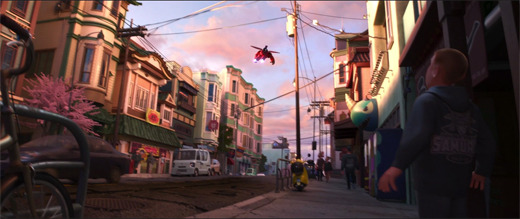
Hiro begins the film rather aimless and restless. A genius by all accounts, he graduated high school before turning 13. With nothing to do and nowhere to go, he’s resorted to building fighting robots, hustling underground robot war tournaments. Partially for a quick payday, partially for a sense of achievement.
It’s the gentle guidance of his brother Tadashi that leads Hiro to enrolling at the San Fransokyo Institute of Technology. The question is, if Hiro was fast-tracked to graduation, why did he never consider higher education until today? Wouldn’t everyone in his immediate sphere be working with Hiro to form a plan?
Nobody would allow a child to graduate five years early arbitrarily. They would have to have a definite purpose and ambition. A goal that they are demonstrably ready to pursue, which redundant schooling would impede. Instead, Hiro gets to sit around the house, bored and detached. The movie deliberately created its own plot hole so it could immediately solve its own plot hole. Hiro needs to be not enrolled in college so the movie can show him enrolling in college.

This opening plot thread has a purpose of intent. A rather noble one, actually. Disney uses Big Hero 6 as a deliberate recruiting device, encouraging its audience to consider a STEM-focused education. STEM (Science, Technology, Engineering, Mathematics) is shown as productive and beneficial to society. It’s depicted as fun and fulfilling. It’s shown to be accessible to all people of all backgrounds.
Tadashi is classmates with three of the six members of the upcoming Big Hero 6 superhero team. Hiro is introduced to them, their works, and their methods. In the original Big Hero 6 comics, these characters were all Japanese. On film, they receive a makeover to represent a wider demographic. This is by intention, furthering the film’s emphasis that STEM education should be available to all.
Advanced education has the unfortunate tendency to favor specific demographics over others. Certain children and teenagers may be discouraged from pursuing a college career path because of numerous factors, institutionalized or personal. If not outright discourage, they’re nudged into disciplines which they may not have a passion or desire for.
Big Hero 6 does its best to undo some of this damage. Tadashi’s classmates represent three different races, but also three different personalities one doesn’t normally associate with the word “scientist.”
Honey Lemon specializes in chemicals and their reactions. She’s a girl with long blonde hair, constantly dressed in skirts and platform heels. She has a strong affinity for the color pink. She’s excitable, chipper, and never apologizes for it. Honey Lemon demonstrates you can be a scientist while still being a girly-girl.
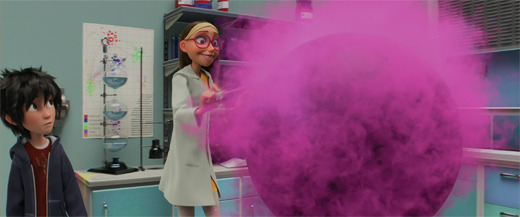
Go Go is developing practical applications for electromagnets. She’s a tough-as-nails punk, commanding respect with her attitude and appearance. She wears a leather jacket, and has a purple streak in her hair. She doesn’t suffer fools gladly, she’s fiercely independent, and always says what’s on her mind. Go Go proves you can be a scientist and a cool badass at the same time.

Wasabi is developing a laser induced plasma fields. He’s a protocol-obsessed neat freak who values order and organization. He’s also built like a linebacker. He’s got pectoral muscles that make him the size of a car. He proves scientists aren’t all pale, scrawny weenies. In all, these three characters show there’s no right way for a scientist to look or act. Anyone can be a scientist.

Or rather, that’s what Disney wanted to say. They took Wasabi’s character one step too far. He looks every bit the jock, but doesn’t act like it. Either in an attempt to soften his edges or flesh out his personality, Wasabi is a gentle giant. It’s not that his body type is misleading; he does possess a physical might, aptly demonstrated during the film’s fight scenes. It’s simply not an accurate reflection of his character. This has the unfortunate implication of stating that the college environment requires a certain level of decorum and obedience. You can be strong and muscular and be a scientist, but you have to toe the line and hide those personality flaws.
Joining these three is Fred. Fred is not enrolled at the university, but a campus employee. He performs as the college mascot. Fred likes to spend his free time at the lab, watching the various developments and experiments. He thinks they’re interesting, and he’s made friends with the students there. He also has an affinity for comic books, eternally nudging the characters into the film’s superhero genre mold.
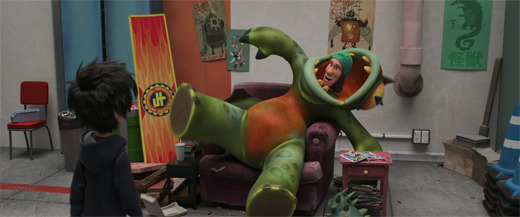
Because Fred has an abundance of free time and an interest in science, one has to wonder why he himself isn’t enrolled. He comes from an upper-class upbringing, so tuition’s not an issue. Perhaps he failed his entrance exam, or his high school grades were too poor. Fred has a childish immaturity about him, but nothing that truly depicts him as an incapable idiot, unworthy of an education. He has every single attribute of being a science major except actually being a science major.
Hiro immediately takes a liking to these four, but the film glosses over the necessary follow-through. These are Tadashi’s friends; he’s spent time with them, developing their friendship over the years. Hiro adopts them as his own by association. They appear in montages and such, but the development apparently happens all off camera. For a film based on the premise of a team, the film fast-forwards through all the necessary teambuilding. They meet Hiro, and they’re all instantly friends.
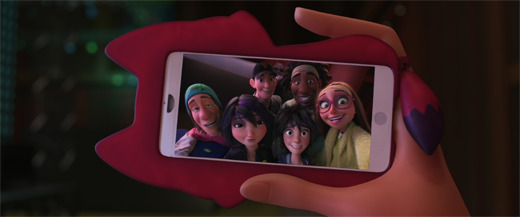
Which is why Hiro organizing them into a superhero team seems strange and off-putting. After Tadashi’s death, Hiro becomes sullen and withdrawn. Tadashi’s old friends do their best to support Hiro in his troubles, but can’t seem to reach him. Instead, he sneaks around in privacy, trespassing in warehouses and investigating the wharfs at night.
Then its revealed that someone is actively trying to kill, or at the very least terrorize Hiro. They’ve stolen Hiro’s microbots, sending a legion of the machines after him. They’re trying to ram him off the road. They’re dropping shipping crates on him. They’re hurling chunks of concrete at his head.

Hiro not only gets his acquaintances involved in this chaos, he asks them to stay involved. He asks them to give up their safety and security to indulge the madness of a kid they barely know. He asks them to put on silly costumes and repurpose their academic life’s work into dangerous weaponry. At a certain point, one expects them to politely but firmly remind Hiro that they like him, but they were really only friends with his brother.
The sixth and final member of Big Hero 6 is Baymax. Baymax is a robot designed by Tadashi prior to his death. The purpose of Baymax was to be an all-in-one medical tool. He can diagnose, treat, and comfort any number of medical conditions, from injuries to illness.

Baymax isn’t the first robot designed by Disney Animation, but he is the best. The struggle of creating an artificial lifeform onscreen is to make them look obviously robotic, but not intimidating or awkward. This means keeping the character deliberately mechanical and metal. This typically results in them looking very stereotypically robotic; uninspired and forgettable.
As the boundaries of the script indicate, Baymax needs to be both a nurturing healthcare provider and a capable crime fighter adept in combat. Two drastically different contrasting points.
Disney succeeds by creating a unique robot. Yes, Baymax has the internal gears, pistons and shafts of any automaton. No, you cannot see them. Nor does he have the classic metallic housing one associates with robots. Instead, Baymax is equally robotic and artificial, but less overtly mechanical. Baymax sports a polyvinyl exterior, inflated like a balloon. This gives Baymax a definite mechanical presence, but also makes him approachable and, for lack of a better word, huggable.

But how does Baymax fight crime? As the movie displays early on, Baymax is essentially a walking blimp. He’s big, he’s awkward, he’s slow, and he’s prone to springing leaks. Not the most adept fighting physique.

The answer has been present for the whole movie: Innovation and application make the world a better place. Honey Lemon fits a portable chemical distillery inside a computerized purse. She can conjure up any number of chemicals in ball form, causing powerful explosions and other inhibiting reactions. Go Go adapts her electromagnetic wheel and axle design into a roller suit. This gives her great foot speed and agility. She can also fire the wheels as projectiles. Wasabi affixes his plasma lasers to a pair of gauntlets. He has powerful punches that can slice through steel and stone. Fred emulates his favorite monster movies. He gets a full-body costume that sports a giant flamethrower.

And Hiro... Well, Hiro is there too. He has a costume, he's present for every fight, but he has no skills. The filmmakers gave him no unique ability or weapon. The closest he has are magnetic couplings he uses to ride on the back of Baymax while flying. He’s the leader of the group, so his superpower is being the generic everyman.
As for Baymax, he gets body armor, a close-quarter combat software upgrade, rocket fists, and a jetpack. This puts him on even grounds with the rest of the team. He doesn’t want to fight, but he does want to protect the rest of his team.

Baymax's autonomy is questionable. At times, he feels like a fully-sentient being. He can think, converse, and make decisions for himself. Other times, he seems full-on automaton. He has a program, he follows the program, and the only way he changes is if his program changes.
Of course, his programming is open to interpretation. Baymax is designed to diagnose and treat medical ailments. When he incorporates psychological care to his roster, his concept of "therapy" is broad. Baymax goes on a long string of errands under the logic that doing so will improve Hiro’s mental health. One thing leads to another, and the medical marshmallow is soon learning Muay Thai techniques. Baymax is either designed very well to learn such a wide range of skills, or designed very poorly to have such exploitable loopholes.
Baymax is one film's strongest elements. He has a unique style and a refreshing presence seldom seen in animation. He has a very laconic approach to everything. He’s calm, unflappable, and unemotive. He states his opinions and observations very matter-of-factly. He is a robot, after all.
But this isn't the only asset Baymax brings to the film. There's an extended sequence where Baymax's batteries wind down. With his processors impeded, he has the mentality and mobility of a drunk. Watching someone stumble around is funny. Watching a stoic individual turn loose and stumble around is hilarious.
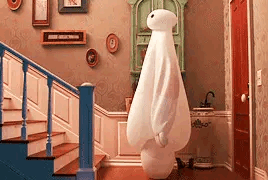
There are also balloon noises. In an extended gag, Baymax receives a few puncture wounds, leaving holes in his skin for air to escape. Why does a polyvinyl robot make the same noises as an ordinary rubber balloon? Who knows. It’s a gag. A long, extended gag. A gag that, if handled improperly, could be an annoying exercise in tedium. But that's exactly the point. The gag goes on so long, it goes from funny, to not funny, all the way back to funny again. It's a risky maneuver, but the movie pulls it off with precision.
Every Marvel movie since Disney's acquisition has used humor and action in tandem. Its one of the strongest contributing factors to the MCU's success. It’s also an essential skill to maintain for a movie like Big Hero 6.
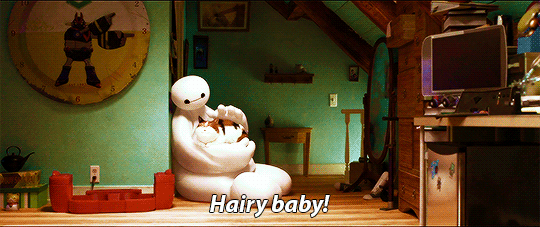
Consider the thematic elements presented in the film: Personal trauma, depression and withdrawal, intense action scenes, killer robots, moments of peril and doom, and adults attacking children. Superhero media has been popular with children since its inception. So much so, it’s easy to forget how violent and mature the genre can be. Big Hero 6 is a kids' movie, but definitely for the older kids, 8 and up. For younger audiences, the kind Disney usually courts, the movie is rather inaccessible.
This limited demographic window hurts the plot structure. In the beginning, every story beat serves the same purpose: get Hiro to organize a superhero team. Tadashi convinces Hiro to attend university because there he will find the resources to become a superhero. Hiro meets his future teammates and sees their skills so they can become superheroes. Hiro reprograms Baymax so Baymax can become a superhero.
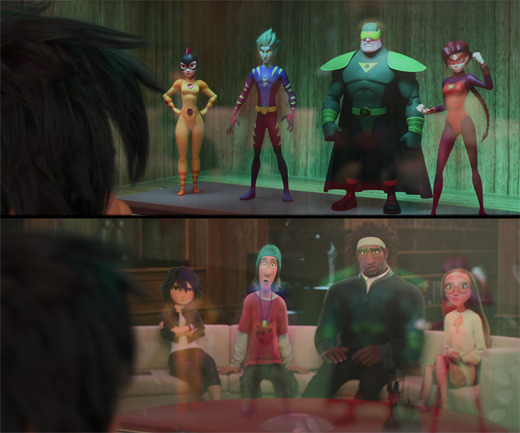
After this, the film prioritizes creating a reasonable villain. After all, superheroes can’t exist if there’s no evil to fight. But a villain can’t just declare their intentions and jump into the world. They’d be arrested. So the villain is a mystery, identified only by his Kabuki mask. His name is a mystery, his face is a mystery, his plans are a mystery, and his reasons are a mystery. They're hidden from the public, hidden from the heroes, and hidden from the viewers.
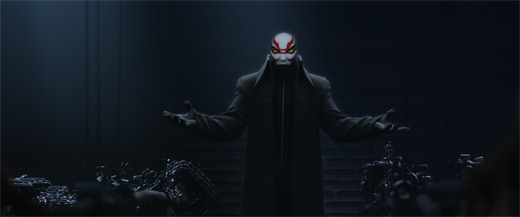
The problem is, hiding the villain’s identity doesn't have the desired narrative effect. The film sets up Krei as a potential villain. He’s mildly adversarial and suspicious. If he was the villain, he would simply be the villain. It would be obvious, and there’d be no point hiding his identity. We all would have reached that conclusion upon his introduction.
Instead, the big reveal is treated as a twist. Our villain is actually Callaghan, the kindhearted, paternal figure. He has a secret traumatic backstory and a thirst for revenge. Callaghan, the character who the movie insisted was important, but lacked any real goals or influence. The character who was nice to the heroes, but quite bitter and hostile towards others. The character who's been suspiciously absent since the first act.
There are only ten characters in this movie, and six are constantly fighting the masked man. Unless Hiro’s Aunt Cass is somehow the villain, there’s only one logical conclusion who the villain is. This mystery element doesn’t serve the film nearly as well as the filmmakers assume it does. It’s the same sort of plot you’d find in any episode of Scooby-Doo, complete with the identity-revealing mask-pull.

Krei’s reckless and cavalier attitude once sabotaged Callaghan's experiments. Callaghan has never recovered from the failure. Hiro’s microbots gave Callaghan the long-awaited opportunity for revenge. This mirrors Hiro’s storyline. Tadashi died in a fire, a horrifying death which Hiro himself has not fully processed. Both Hiro and Callaghan blame others, both want justice, and both succumb to their own rage.
Since we're on the subject, let’s consider Tadashi's death. Him dying may be a required plot element, but Disney chose an incredibly stupid means of death. Tadashi goes out in a literal blaze of glory. The supposed genius runs into a burning building with the intention of saving Callaghan, trapped inside. He does so despite not knowing where Callaghan is, or having any way to protect them both from the inferno. We’re supposed to applaud his bravery instead of his brashness. If we don’t, the movie can’t use his noble death as a motivator. It's an overly-pious suicide mission to emphasize his selflessness. Tadashi deserved a better death scene.

Big Hero 6 is the second Disney film in a row to use depression and grief as a major theme. Hiro's trauma from the death of his brother is an essential element of the film. Disney doesn't sugarcoat the grief. Hiro doesn't get over it or move on. It devastates him until he finds an outlet to process it. He blames Callaghan for Tadashi’s death. He nearly kills Callaghan in an act of blind rage.
While everyone helps Hiro back to reality, it’s Baymax who really reaches him. The entire reason he’s enabled Hiro in this superhero ambition is because he assumed it would help him. But Hiro hasn’t grown or healed at all. He’s only turned his grief into blame into wrath.
Hiro realizes his mistakes. No amount of violence will fix his problems, and it won’t provide any catharsis. The only way to get over Tadashi's death is to honor his legacy. For Hiro to live his best possible life. To honor the values they shared. He later uses this revelation against Callaghan. It's a last-ditch attempt to keep his brother’s mentor from becoming irredeemable.

A noble theme for the movie to embrace, but maybe not from Hiro’s lips. He himself was ready to kill Callaghan in the previous scene. Hiro clearly learned the error of his ways, but the short distance between these two moments is not long enough to demonstrate his growth. He literally learned this lesson eight minutes ago. He sounds like a hypocrite, projecting his own faults.
The final act of healing is closure. Hiro needs to accept Tadashi is gone, but his own life needs to continue. He cannot cling to the past. A harsh lesson that gets reinforced in a bad way.
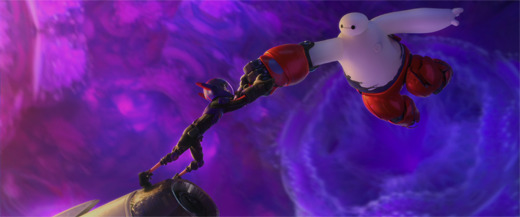
When circumstances are dire, Baymax realizes the only way Hiro can live is if Baymax sacrifices himself. Not just a good friend in his own right, Baymax is the last link Hiro has to his brother. Losing him would be like losing Tadashi for a second time.
And Hiro accepts that. Life is full of ups and downs. People will come and go. Their lives may be short, but their legacies will endure. All we can do is live the best possible life to honor their memory.

Baymax’s death is as genuine and heartfelt as any Disney death, but it’s a fake-out. We forget that Baymax is a robot. He’s a mechanical body with a computer chip brain. Baymax gets a death scene, but can’t actually die. Hiro literally rebuilds him in the film’s epilogue. It speaks volumes to the film’s immersion that any drama or emotion can be mined from this scene.

So often in Disney’s history, the studio has revisited plot points and trends from previous movies. Usually, it's an attempt to replicate success while minimizing efforts. This results in sloppy craftsmanship and second-rate imitations. Big Hero 6 does the inverse, revisiting failed experiments.
Hercules was Disney’s first attempt at a superhero film. The studio didn't fully understand the structure or significance of the genre. Big Hero 6 improves on it, showing a depth and awareness beyond ‘Punch the bad guys until your problems go away.’
Meet the Robinsons tried to demonstrate the importance of innovation and progress. But the movie had nothing more to say beyond showing how great it would be to live in a funhouse. Big Hero 6 demonstrates the methodology of invention and discovery. They’re facets of life. Science and progress are a blank canvas. Powerful if used properly, and exploitable if mistreated.
Brother Bear tried to display the futility of revenge, prompted by a brother’s death. Big Hero 6 goes beyond, showing us that healing involves closure and acceptance. You don’t have to upend or restructure your life to cope with loss. You just have to keep living.
Big Hero 6 even integrates a rock song into a montage, something Treasure Planet tried with awkward results.
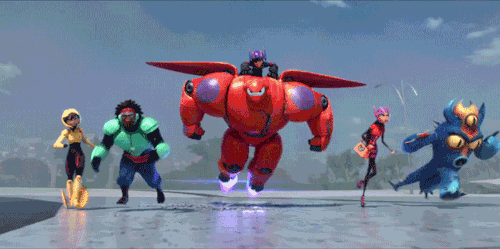
As a result, Big Hero 6 is as a well-made piece of superhero fiction despite faltering in elements beyond its genre. It fudges a lot of storytelling beats, getting characters where they need to be and justifying how they act when they get there. Anything is acceptable as long as it leads to superhero stuff.
And that was always the point. Disney Animation wanted to make a superhero movie. They wanted to make a Marvel superhero movie. That’s exactly what they made, even integrating a Stan Lee cameo. They wanted nothing more and nothing less.

There was no need to fix the problems seen in other Marvel movies, or even acknowledge them. Marvel was a popular brand, and massively successful. Big Hero 6 is a movie about science. But Disney's ironic conclusion was, there’s no point in experimenting if something already works.
Beauty and the Beast Fantasia The Lion King Frozen Snow White and the Seven Dwarfs Cinderella Alice in Wonderland Sleeping Beauty Mulan Tangled The Little Mermaid Aladdin Lilo & Stitch The Many Adventures of Winnie the Pooh Pinocchio The Jungle Book Robin Hood The Sword in the Stone Bambi The Emperor’s New Groove The Hunchback of Notre Dame The Princess and the Frog The Great Mouse Detective Big Hero 6 101 Dalmatians Bolt The Three Caballeros Lady and the Tramp The Rescuers Down Under Atlantis: The Lost Empire Wreck-It Ralph The Fox and the Hound Fantasia 2000 Peter Pan Dumbo Hercules Meet the Robinsons Brother Bear The Black Cauldron Melody Time Oliver & Company Treasure Planet Tarzan The Rescuers Pocahontas Saludos Amigos The Adventures of Ichabod and Mr. Toad Winnie the Pooh The Aristocats Dinosaur Fun and Fancy Free Make Mine Music Home on the Range Chicken Little
#Big Hero 6#Big Hero Six#walt disney#Disney#Walt Disney Animation Studios#disney studios#Disney Canon#marvel#Film Criticism#film analysis#movie review
4 notes
·
View notes
Text
ACCESS FILES : // B.ARBARA G.ORDON - DISABILITY cw/tw: mentions of physical and sexual abuse, erasure of disability, and overall “manpain”
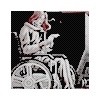
the infamous k.illi.ng j.o.ke comic has a lot of issues itself. i am not going to start this off by saying it’s a gold standard of comics. barbara is used literally as a fridging device to inflict pain on to her father, jim gordon and by extension, b.atman. she’s sexually abused and shot in the stomach, the bullet hitting her spine and causing the paralysis that causes her to lose the use of her legs. it effectively ended barbara’s role as batgirl, as she simply couldn’t physically do it anymore.
but barbara is a resilient person, and the things that made her batgirl were not just her ability to jump from rooftops or kick a bad guy’s ass. she was bright, a near-genius with her eidetic memory, and resourceful. she was every bit of the detective that her father and batman were, right on par or even surpassing them in some aspects. she was often a voice of reason and logic within the “family.”
so she evolved from that. barbara took up the role of the “ oracle “ -- an all-knowing, all-seeing being of greek myth known for her great prophecies. in this new role, barbara sat within the clock tower of gotham, using her advanced knowledge of technology and coding to create an environment capable of tapping into some of the most advanced systems in the world so that she can do surveillance and be the eyes for the superhero community when it needs it. she created and led the birds of prey, mentored and ran missions for two different batgirls, and aided the justice league and other members of the batfamily in their own missions. she became an extremely valuable member of the superhero community in her own right, and could still kick ass, even from her chair. her disability didn’t define her, but she also fully accepted that this was her life now, and she was going to make the most of it.
barbara has many great lines and moments throughout her time as oracle that are so extremely important in showing her acceptance of the role.
“ y’know, a lot of the time it’s like you batguys want me to hold on to the past because you can’t get over it. understand -- i have. i have a new life now. one i like -- one that fulfills me. it’s not the same one i had before, but it’s good. maybe even better. “
“ do you know why i don’t keep handles on my chair? it’s because i don’t like to be pushed. “
“ never underestimate a deathbed as an opportunity to rethink strategy. “
“ when i was in physical therapy, there was a small sign on the gym wall. it read, ‘ no matter how dark the night gets, the sun still rises in the morning.’ every day, i’d wake up two hours before dawn. back then it’d take me that long to get into my chair, clean up, and go outside to watch the sun rise, but i did it. and i still do. i love life, dad. i love every single day. “
these are just small examples of ways that barbara has even outwardly said that she’s content with her life and that she isn’t going to chase some way to fix things because she doesn’t see herself as broken.
what they did in nu52 completely erases that immense character development and growth by having her regress to wanting to undergo surgery to get her ability to walk again. there was absolutely no need for barbara to be ba.t.girl. there had been two different batgirls since she had become oracle, and making her batgirl really hurt all three of those three characters and their roles in the overall universe more than it did any good.
regardless of the implications on overall character development, the erasure of disability from one of the most prominent disabled heroes in comics is just plain gross. there are already a very finite number of disabled heroes across the superhero platforms, and with a hero who had formed a complete identity due to that disability that ultimately worked for her and made her happy to suddenly change and want to get fix is ableist beyond belief. the wheelchair does not define who she is, but it’s part of her, and any erasure of disability that is like this is just simply wrong.
SO FOR THIS BLOG’S CANON:
1. i simply will not be taking nu52 into account. ba.t.girl of b.ur.nside is a story that i fully believe should have belonged to stephanie, not babs. the ba.t.girl story that precedes it is fully against what i think is right for the character, so you simply just will not see any nu52 content here.
2. there are some elements of rebirth and the more current stories that i do like, but it is still limited. for example, the current n.ight.win.g run has some things in it that i see babs doing, but i’m still fully against her not having her disability, even if i am glad that she’s back in the role of oracle. so you might see some current narrative things, but please be mindful that this blog did not erase her disability and will be carrying on as if she has been in the wheelchair this entire time.
3. the portrayal of babs on this blog is highly reflective of the late 90s/early 00s birds of prey run, with a mix of d*xon’s ni.ght.wi.ng, and both the cass & steph runs as b.at.gir.l. for the most part, everything up until 2011 is considered canon for this portrayal.
4. i will likely update this more as i continue writing here and am getting back into reading more comics!
15 notes
·
View notes
Text
@firespirited replied: folks: google "4/13 + fandom" and you'll eventually find homestuck birthday celebrations
Thing is, being me, before I was too irritable with the poor buffoon, this simpering bucket of dried out wallpaper paste, I myself Googled most permutations of “what is 4/13?” and “what is the meaning of 4/13?” returned either Homestuck as the first or second result (with Scripture being the other)
Some of them even included references to the fact the comic itself was unmentionable, thus further explaining the joke of why I was being so oblique about the whole thing
Again, I am very sorry for certain people who are convinced they do not know how to research and are unwilling to learn to do so, but it was literally the first or second result for almost every permutation I could think up And yes, I am absolutely willing to spend precious minutes of my finite life investigating this, and also writing lengthy screeds in reaction, but I will be damned to eternal hellfire before I explain my own jokes when asked :D
#just call this fucko the Thief of Joy and Levity#I realize I am perhaps unreasonably irritated by this thing but that is why it is a pet peeve
7 notes
·
View notes
Note
👀
Hehe, okay, this was supposed to be a comic from the Demon!Barbara AU that you can... probably find in the art tag, and it was supposed to be a convo between Walter and Barbara, in which Strickler, that one principality who was once supposed to look over monks (the history recording ones), ask Barbara, the demon of progress, how she fell. Here is the script, called tentatively “The Walk-Out”.
S: So… how did you fall?
B: I didn’t. I sort of… walked out.
B: …now that I think about it, I did the first even union strike. I should add it to my record.
S: That would mean that… you disagreed with the policy.
B: Oh, I disagreed the hell out of that policy.
B: Do you know what kind of stuff I was in charge of making during the creation?
B: I made Black Holes.
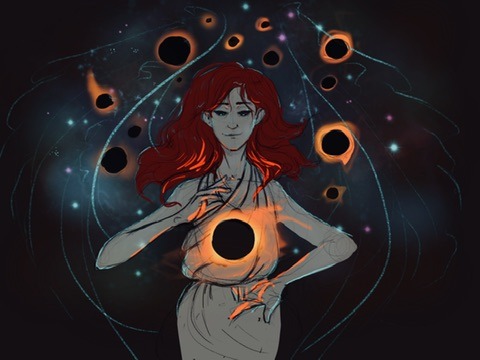
S: …you worked on something that dissolved the the very thing we were making.
B: Not dissolved. Moved. Everything has its natural finite point. The entropy of the universe is life itself, and without it there is no change, no growth. Nothing should exist in a constant, otherwise we are faced with nothing but stagnation. I just helped it move along a little.
B: This is what I always did. Sometimes I just had to get inventive about it.
S: That sounds almost noble. I doubt your management supports that.
D: Please. My side is many things, but they are really not very good at long-term planning. They try. But it goes about as well as you think, if you remember how the Up- or shall I say Down-rising went.
S: Disastrously?
B: That would be a word to describe it. But at least they did something.
S: And so did you.
B: Later. After the fall but before the apple thing. I actually suggested it. There was a pie chart involved. Very fancy.
S: So your disagreement was about the apple?
B: Yes, it was about the flipping apple! We made all these things, we made whole worlds, moving, growing. And for what? For two creatures actually capable of exploring and studying and marvelling in those creations to just sit on their asses in one garden doing jack? If that doesn’t sound like a complete waste of everyone’s time, I don’t know what is. And which ever ass though that putting that tree right there in the middle, that’s just adding an insult to the injury.
B: So yeah, as I told HER, if SHE thinks I will sit, just like the rest of them, and watch paint dry, she is wrong.
S: Was SHE upset with you?
B: I don’t know. SHE didn’t say anything. Or maybe I didn’t hear over the sound slamming the gates behind myself on the way out to find an organisation that would appreciate my ideas.
S: Did it work out?
B: You are a scholar. You tell me.
S: It’s… fascinating to observe. All of it. The good and the bad.
B: As all life should be.
In other news, Demon!Barbara invented both the Fidget Spinner and the Suffragette movement, and I can’t even begin to describe how bored she was during the Dark Ages. Also, she still “works” as a doctor, except she just miracles sick people to health while muttering medical mumbo-jumbo because she can’t be arsed and writes it down as “facilitating bad habits in mortals”.
#trollhunters#Overcoming Adversity AU#ler draws#wip meme#this is now I write comic scripts btw#babblish
15 notes
·
View notes
Text
John Keats — Intentionally Boring?

There are many poets out there whose work can only be characterised as bad.1 There are others whose poems do not even afford the amusement of comically poor writing — poets who force us to label them boring. This latter situation — arising from a vice of incompetence, one too marked to be excused but not drastic enough to create hilarity — is seemingly the more unfortunate for the reader, as it can induce no feeling other than that of lethargy.
And yet reading the poems of John Keats forces us to reexamine our position — for the vast majority of his famous compositions can only be considered boring. But how can a poet of his stature write dull and plainly uninteresting verse? How can the opening lines of his odes, instead of inviting and inciting us to read on, usher us on our way to sleepland?
It is not as if he were simply a boring person. He died at the age of twenty-five, having published his first poem at the age of twenty — a remarkably short and thus busy poetic career. His quarter of a century on earth was one full of tragedy — the deaths of his father, mother and brother; his own fatal illness — as well as joy and contentment — his relationship with Fanny Brawne; his many lively friendships; his time in "the pleasantest Town"2 of Winchester. He also proved his ability to write consistently engaging verse with the humorous trifles he included in his letters — poems such as The Devon Maid, Women, Wine, and Snuff and A Song about Myself.
Since it is inconceivable for his poems to represent accidental failures in writing interesting verse, we are left with only one conclusion: that Keats was intentionally boring.
Though this idea solves the issue at hand, it begs an answer to the question: why? What reason could Keats have to choose to write boredom-inducing poems? Because, ultimately, what good is a boring poem?
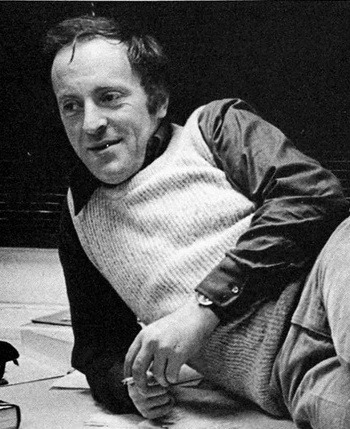
Queer poet and essayist Joseph Brodsky comes to the rescue to help answer these questions. He tells us that "boredom speaks the language of time, and it is to teach you the most valuable lesson in your life ... – the lesson of your utter insignificance. It is valuable to you, as well as to those you are to rub shoulders with. 'You are finite', time tells you in a voice of boredom, 'and whatever you do is, from my point of view, futile.'"3 And that futile finity is exactly what Keats describes when he writes about melancholy:
She dwells with Beauty – Beauty that must die; And Joy, whose hand is ever at his lips Bidding adieu; and aching Pleasure nigh, Turning to Poison while the bee-mouth sips: 4
Keats employs boredom as a poetic technique because he knows that it can offer us insights into the nature of life. He does what Brodsky tells us we should: "When hit by boredom, go for it. Let yourself be crushed by it; submerge, hit bottom. In general, with things unpleasant, the rule is, the sooner you hit bottom, the faster you surface."3
Boredom teaches us the uncomfortable truth about the insignificance of our fleeting existence, one which we perhaps would rather not think about. But instead of seeking beauty in the material world; instead of writing pretty, forgettable poems about the pretty flowers that will soon wilt away, Keats realises that there is nothing more beautiful than wisdom:
'Beauty is truth, truth beauty,' – that is all Ye know on earth, and all ye need to know. 5
Thus, Keats's seemingly dull verse serves to reveal a beauty that transcends all worldly pleasures.
Keats writes boring poems also as a testament to his awareness of his own insignificance. Instead of engaging in self-indulgent virtuosity, he decides to distance himself and his poems from his subjects – playing himself down to maximise poetic efficiency. The necessity of modesty in a poet was part of his philosophy of composition, which he describes in a letter to his friend J. H. Reynolds: "Poetry should be great & unobtrusive, a thing which enters into one's soul, and does not startle it or amaze it with itself but with its subject. – How beautiful are the retired flowers! how would they lose their beauty were they to throng into the highway crying out, 'admire me I am a violet! dote upon me I am a primrose!'"6 This shift of focus from the poem to its subject is apparent in the opening lines of his Ode to a Grecian Urn:
Thou still unravish'd bride of quietness, Thou foster-child of silence and slow time, Sylvan historian, who canst thus express A flowery tale more sweetly than our rhyme:
Keats's genius lies in his innovative deliberate use of boredom as a poetic technique. In an act of great modesty, he writes restrained poems which force us to think; which impart their ideas by making us experience them. Most of all, Keats teaches us this – whenever a poem is boring, we should ask ourselves the question: what for?
Not to point fingers, but Eiléan Ní Chuilleanáin comes to mind. ↩︎
Tomalin, Claire (ed.). "Poems of John Keats." Penguin Classics. 2009. pp. xiv. ↩︎
Brodsky, Joseph. "In Praise of Boredom." On Grief and Reason. pp. 104-113 ↩︎ ↩︎
Ode to Melancholy, III. ↩︎
Ode on a Grecian Urn, V. ↩︎
Letter to J. H. Reynolds, 3 February 1818. "Poems of John Keats." pp. 96. ↩︎
8 notes
·
View notes
Text
Joker est-il à la hauteur de ses enjeux sociaux et politiques ?
Cela fait des semaines que l’on en entend parler. Malgré son petit budget, le film rencontre déjà un succès international, et fait beaucoup parler. Qualifié de « réussite artistique » de manière assez unanime semble-t-il, c’est surtout le propos de Joker qui fait débat.
Aujourd’hui, on vous propose une analyse du film par le prisme des sujets politiques et sociaux qui en sont au cœur.
Alerte spoilers bien entendu ! Ne lisez pas ceci si vous souhaitez découvrir le film en salles.

Zazie Beetz en Sophie Dumond, jeune maman célibataire et voisine du personnage principal.
Joker, c’est l’ambition de dénoncer, d’ouvrir des débats et d’offrir une nouvelle origin story à l’un des super-vilains les plus emblématiques de la pop culture. L’œuvre nous embarque ainsi dans une Gotham City en période de crise sociale et politique, ce qui aura des conséquences sur l’ensemble des évènements du film.
Le plus grand paradoxe du film réside probablement dans son échec à traiter correctement le sujet des maladies psychiatriques. On assiste à un mélange du meilleur et du pire, qui ne servira probablement pas du tout la cause.
En l’occurrence, Arthur Fleck, le Joker, est clairement discriminé pour son rire pathologique, qui se déclenche lorsqu’il est mal à l’aise. Moqué en milieu professionnel puis dans une émission de télévision, il suscite la méfiance et la colère dans la rue ou les transports. Le point de vue du film, autrement dit la perspective d’Arthur, permet de mettre correctement en lumière le caractère généralement injuste et gratuit de tout ce qu’il subit en raison de son handicap.
À juste titre également, l’histoire souligne la problématique du maintien des services publics, ce qui inclut le suivi de personnes vulnérables comme Arthur Fleck. Il dépend en l’occurrence de son suivi pour obtenir son traitement médicamenteux, dont il ne peut plus bénéficier une fois que le service social qui le suivait est fermé.
Cependant, Joker finit par retomber dans les travers d’un certain nombre de fictions qui traitent de maladie psychiatrique, en particulier dans l’univers DC Comics. Rapidement, Arthur devient frustré puis violent, et commettra pas moins de 7 meurtres au cours du film. De même, on découvre que sa mère, également atteinte de maladie psychiatrique, l’a en fait maltraité, et laissé ses compagnons le maltraiter également.
On se retrouve ainsi, dans ce film qui entend apparemment dénoncer la psychophobie, avec seulement deux personnages malades, qui s’avèrent être coupables de violences qui ont fait des gros titres dans la presse. Cette représentation exclusive des malades psychiatriques comme des personnes violentes par essence n’est jamais contrebalancée à l’écran. Il n’y a pas plus efficace pour criminaliser ce pan de la population et justifier les maltraitances qui lui sont infligées.
De cette manière, en dépit de ses intentions de surface, Joker s’inscrit dans l’héritage des super-vilains de l’univers Batman, souvent « fous », destinés à la violence et avec une place attitrée au fameux Asile d’Arkham. Sans compter que mettre en avant la « folie » d’un criminel permet en réalité d’écarter toute responsabilité de l’intéressé.
À ce stade de votre lecture, si vous pensez que le discours de ce film a touché le fond, ce n’est pas fini.
Pendant toute la durée de Joker, les évènements nous sont présentés du point de vue d’Arthur Fleck, et c’est probablement là un défaut fatal de l’œuvre. Décrite par plusieurs critiques comme « ambiguë », elle laisse en fait toute la place à la perspective du personnage principal. Chacun des meurtres représenté à l’écran trouve une espèce de justification dans la narration, soit un préjudice moral, soit un préjudice physique, de sorte que l’on ait davantage de mal à reprocher ses crimes au personnage. Arthur a aussi l’air d’avoir un semblant de code moral, en assassinant un collègue qui l’a persécuté, mais en laissant s’échapper un autre qui ne lui a jamais causé de tort.
Le but semble être de créer une empathie dérangeante, dont l’effet pervers est d’appuyer en tous points une narration qui, au final, glorifie le Joker. Le seul contrepoids, mince toutefois dans l’histoire, est cette scène où il est établi explicitement qu’Arthur a complètement fantasmé une relation avec sa voisine, interprétée par Zazie Beetz, après l’avoir suivie dans la rue. C’est un moment où l’on ressent la tension et la peur suscitée par Arthur chez Sophie, complètement innocente, mais c’est un moment bref.
De plus, bien qu’Arthur Fleck finisse à Arkham, son histoire est présentée comme un processus d’empowerment : un pauvre homme persécuté a repris le contrôle sur sa vie par le meurtre, tout en devenant le symbole d’une révolte sociale. Au début de Joker, le protagoniste semble sur le point de tout perdre ; à la fin, il a tout gagné. Et toute la mise en scène le met sur un piédestal, puisque, soutenu par la foule, il se met à danser, plus heureux que jamais dans une scène qui paraît grandiose. Ses séquences de danse au cours du film sont d’ailleurs probablement conçues pour amplifier l’empathie envers le personnage, qui paraît si sensible et artistique.
En définitive, Joker déroule le tapis rouge aux défenseurs des maltraitances psychiatriques de même qu’il devrait satisfaire les individus douteux qui s’identifiaient déjà au super-vilain. Le bilan peut donc être, disons-le, catastrophique.
Mais aurait-on pu éviter cela ? Oui.
La solution de base aurait déjà été d’éviter d’utiliser le Joker, un super-vilain des plus cruels, pour dénoncer la psychophobie : c’est inefficace, puique l’on tombe facilement dans un argumentaire qui légitime les maltraitances psychiatriques. C’est à peu près le pire point de vue à adopter pour traiter de ce sujet.
Ce qui aurait été intéressant à mettre en lumière et dénoncer dans un film comme celui-ci, en revanche, ce sont bel et bien les dynamiques patriarcales qui peuvent amener des hommes à devenir des meurtriers. Il faut effectivement garder en tête que les coupables d’homicide sont en écrasante majorité des hommes (83% en 2017 en France selon le Ministère de l’Intérieur), qu’il s’agisse de meurtres domestiques, d’agressions en pleine rue ou d’attentats. De nombreux facteurs peuvent entrer en compte, et notamment la construction de la masculinité autour de la violence, ou encore l’impunité des hommes dans les violences sexistes. Tout cela est absent du film, qui se perd dans un discours flou sur la psychophobie et ses conséquences.
Joker aurait, en conclusion, probablement pu être à la hauteur de ses ambitions si son équipe créative avait étudié un peu plus son sujet et proposé un véritable angle critique, plutôt que de proposer simplement le point de vue du criminel. Le discours du film est donc, à mon sens, un échec cuisant.
Captain Chocolatine
2 notes
·
View notes
Note
Hi, I just wanted your opinion on something. Me and a few others have noticed on tumblr that people sort of 'recycle' other peoples posts. As in, they take their ideas or actually sentences straight out of them and pretty much copy and paste, and gain lots of notes that way. Is this plagarism? I don't think it's nice to do but I'm not sure if it's actual plagarism. I just wanted your opnion if you don't mind
I’ve experienced straight up plagiarism and every shade ofgrey: people copying my fanfics to theiraccounts, hacking and making crappier versions of headcanon posts I worked on, copyingand pasting lines into standalone posts, straight up screenshotting posts fortumblr and other social media.
When I first started in fandom I’d get so riled about all ofit, but especially that questionable ‘is this intentional because it suresounds familiar’ type thing. I’d also get into heated debates over characternuances, fandom tirades, etc. In discussing both of these issues with seasonedfandom friends, I heard over and over that there’s nothing in fandom worthgetting upset about, because it’s all been said before.
I rolled my eyes, because of course there was! That personCOPIED my post! That was my idea last week/month! That character is a greasyslime ball and so is anyone who stans for him!
And then, when my one year in fandom rolled into two, three,four, five, my group of friends mostly moved on from those spirited debates and(omg) sex riots, took our discourse offline into real life stuff as friendshipsgrew, and stopped spending so much time on Tumblr.
A new batch of enthusiasts cropped up, and watching you guysblossom has been deja vu.
Even I was annoyedwhen I saw someone making a bunch of character meta posts I had already made,until I realized how silly that was, because no one was ‘copying’ my work. Youwere discovering the same things about [insert character] that I haddiscovered. It became an interesting sociology observation. Your revelation? Yourinside jokes? Your fandom tirades? All essentially the same. Your passion drovethe same enthusiastic late-night, twelve paragraph meta binges that had fueled me.
How can I begrudge people the joy of that falling into the fandomrabbit hole feeling?
This cracked podast (the only cracked podcast episode I’llever rec lol) is an interesting listen. I don’t agree with everything they say,but the crux is that there aren’t many new ideas, and that culture (what comesin) spawns divergent ideas in people all. the. time. Multiple people had the idea for harry potter at the same time. Patents are sometimes filed on the same day. That’s just how ideas work.
Fandom is an insular bubble on a good day, lovelies. It’s narrower if you are just on one site,narrower still if you’re into the same few ships or characters. Everyone’sexperience is different, yes, but there are a finite number of headcanons, ficideas, meta posts, jokes. People say “has anyone done this” on an edit or comicfor a reason: because most of them had been said before, probably dozens oftimes.
A few years ago I had an idea to draw out Tom Riddle’s diarypages, one of them being all the other anagrams Riddle could have used insteadof I am Lord Voldemort. Sound familiar? It should, because someone else had alreadycome up with the idea. Luckily I saw that comic someone else had made before I actually drew and released it. But in myhead it was a completely original idea! Now I may have seen it, forgotten aboutit, and then it popped back into my consciousness as a great idea, or we boththought of it separately. A few months ago a friend and I discovered that we’ddeveloped and written the same, very specific side-character headcanon into twoseparate fics.
I do understand your frustration, especially if those postsare more popular than yours. But memory is a fallible, fickle thing. I’d encouragethe benefit of the doubt. Perhaps they don’t realize. Perhaps they’re lonelyand are trying to make friends. Perhaps they’re struggling with mental illnessand that little bit of validation is the only thing getting through the day. It’ssuper easy to vilify someone on the other side of a screen when we don’t knowthem. Try reaching out (off anon) and just starting a conversation.
There are people who build a blog from deliberately stealingothers’ work, but the vast majority of us are here to have a good time. And soare you. If you’ve been talking to people then it sounds like you’ve gotfriends here. Commit to curating the best fandom experience for yourself thatyou can—you owe it to yourself!
You might roll your eyes at this response… Fair, but come talk to me in four years. :D Years in fandom have given me an excellent set of blinders.I come here to find what I want and ignore everything else. I don’t…owe anyoneon here anything. That anon who asked me about johnny d*pp…again? Not worth it.That person who literally screenshotted one of my posts…again? Not worth it. You’rehere to have fun, not to be miserable or get notes. If that means blockingchronic grey-area offenders, do it. Report straight up plagiarist posts if youfeel the need, but then let it go. Hang in there!
23 notes
·
View notes
Photo

This January, The Bowl-Ders build a snowman.
3 notes
·
View notes
Text
Putting my own thoughts here to remember for myself (it’s a veritable essay so consider this your warning):
this reminds me a lot of many of the endings (what do you call forewords at the end of stories?) gerard has put into comics. danger days, doom patrol. the milk wars. his words, even as he says he prefers art, are in itself art. i think, anyways. what else would it be called? could be called?
he opened up a music video by declaring himself to “like d&d.” if anything, this proves everything- because what is dungeons and dragons without storytelling? and what is this goodbye letter but a story, and what is a story but an art form. what are lyrics without a story, so on and so forth.
and what is a story without an ending. he talks about this fail-safe, this doomsday button existing within the band, and i understand that. and yet, despite this self-destruction, despite this seemingly finite ending, they’ve come back. and what does that say, exactly? especially since it was never exactly titled a death? well, i’m not sure. i’m still in bed. i can’t fully analyze everything right now. but it probably says something, means something. something about life and introspection and a million other things.
anyways. i’m not really sure what my point is meant to be. an appreciation post? some weird poetic remarks on the impact of art? i don’t know. i just haven’t seen this post before. i’m glad i did- i get to go see MCR tomorrow, so there really isn’t any better timing. i need to get up now, and do laundry, and a million other things- so i’m stopping my thoughts here- but uh. i hope it’s at least a little bit coherent.
Just rediscovered this post from 2013 :')










341 notes
·
View notes
Text
watched infinity war with some friends last night
sweet fucking christ. that was pretty damn good. also Thanos was well done. he’s diff from the comics. but Honestly?? kinda prefer him that way. his motivation feels more tangible than “I, LITERALLY, WANNA FUCK DEATH.” his cronies are a touch forgettable though. but hey atleast the big bad is interesting. that all being said, watching my fave superhero die for like, the second time? yeah that was kinda hard to see THOUGH HE WONT THE ONLY ONE :D (the rest is spoiler ramblings)
so like. yeah death toll; All the gaurdians except Rocket. (and nebula if you count her as a guardian. i don’t personally.) pretty much everyone on the asgard escape ship is fuckin dead. including Hymdol (dunno how to spell his name) and Loki. though he may come back too. doctor strange, Nick Fury, and Maria hill are all dead. Then on the avengers side, Bucky, Falcon, Vision (duh), Scarlet Witch, Black Panther, and Spiderman all fuckin died. the survivors being; Cap, Thor, War Machine, Black Widow, Hulk/Banner, Ironman, Rock and Nebula, and Hawkeye along with Antman since they didn’t even fuckin show lol (though due to events IN the film. those two may still be fuckin dead) and lastly, a reverse death in the Reveal of Red Skull. like yeah no really. surprised the fuck outta me. btw spidey was the aforementioned fave that died. but yeah. that was a trip in a half. i know most of these guys are coming back. i mean, Spidey and Panther got two or more solo films. plus my knowledge of comics, while not very vast, does already lemme know that (SHOCK AND SURPRISE) the good guys will manage to beat thanos in the next film. hell i even fuckin know who’s gunna get the gauntlet form Thanos. so yeah some of my suspention of disblief is just a tad shattered. but hey, still a solid film. and honestly i dont have many complaints. other than one or two of the jokes in some scenes (in particular Banner explaining about thanos to Doctor Strange and Tony) had jokes that fell somewhat flat. but the rest of the humor didn’t distract from the tone. but you know there’s gunna be that 1 asshole who’ll be like “MEEEEEH, ISH SUPPOSED TO BE SERIOUS! NO JOKES”like, fuck off man. you really surprised by this? yeah the MCU tries to hard to funny sometimes but humor itself aint a bad thing but other than minor nitpicks, my last complaint is that Thanos ideology is solid/interesting. But has one counter argument. Thanos in this film, wants balance. he feels the universe is finite, and thus many suffer due to not enough readily available resources. case and point his home planet Titan. (yes, i know in the comics it’s a moon. but they dont say that soooooo planet) Titan is a deadworld, due to lack of resources. he genuinely feels people need to die so the rest can prosper. obviously there’s many flaws in this ideology, but atleast it feels tangible. and the film does a great job humanizing thanos. which again, i find WAY more interesting than “hey lady death, check this fuckin shit out (snaps fingers, wiping out half of all life) wanna fuck?” however. despite my liking of his motivation. there is one counter argument, which i hope gets brought up in the 4th film. “why not just MAKE resources using the fucking gauntlet?” so yeah. thanos prolly kinda let that slip his mind. hope that was worth killin your daughter ass. oh that, and my last flaw is this undemrines thor ragnorok abit. “Asgard is not a place, it’s a people” yeeeeah well, unless someone snaps them back into existence asgard’s fuckin dead. but yeah. point is i liked the movie alot, and honestly 2019 cant come fast enough?? i need more. (OH ALSO; THOR GETS FUCKING STORMBREAKER AND IT’S FUCKING RAD, AND IT EVEN LOOKS LIKE ULTIMATE THOR’S HAMMER, AND IRONMAN HAS THE NANO TECH SUIT, AND THE IRONSPIDE RHAD THE FUCKING LEGS!!!!! AAAAAAAAAAAAAAAAAAAAAAAAAAAAAAH)
2 notes
·
View notes
Text
Robin Hood at 34
A review by Adam D. Jaspering
Robin Hood is one of the most famous characters in fiction, which is ironic as his story is not particularly well-known. People are aware of the archery, of Sherwood Forest, of the green tights. People know he robs from the rich and gives to the poor. People know he splits an arrow in half. But what story connects these elements?

Robin Hood is an English folk hero, whose tales date back to the 13th century. The earliest surviving published text is the 15th century’s “Robin Hood and the Monk”. He is not credited to any specific author or creator. As such, Robin Hood has been embellished, changed, and amended constantly through the years.
Two literary texts are credited with shaping the figure of Robin Hood we recognize today. The first is Joseph Ritson’s adaptation with the comically long title: “Robin Hood: A collection of all the Ancient Poems Songs and Ballads now extant, relative to that celebrated Outlaw,” published in 1795. The second is Howard Pyle’s 1883 novel, “The Merry Adventures of Robin Hood“
Ritson’s novel was the first to collect the various medieval tales into one finite source. He is credited with creating a singular timeline for Robin Hood during the reign of Richard I. Thematically, Ritson was influenced by Thomas Paine and the French Revolution. He chose the core precept of the Robin Hood character: the good of the common man outweighs the rule of law.
Pyle’s novel was the first Robin Hood publication written specifically for children. Pyle is credited with making Robin Hood an all-out philanthropist. Earlier books made Robin’s good deeds situational and conditional. Pyle made him into the heroic and noble patriot audiences are familiar with today.
All of this is a long, long way of saying there really is no definitive story of Robin Hood. A singular story doesn’t exist. It’s a bunch of detached, unrelated episodes all featuring one character. It was a serial before serials. A series before series. Any definitive tale is one person’s selection of events.
Disney’s Robin Hood takes full advantage of the disassociated mythic elements. It picks and chooses several iconic elements from the Robin Hood canon, creating a few new ones. It creates a unique story, not reminiscent of previous Robin Hoods on film. Especially important, as Disney produced a live-action Robin Hood film 22 years earlier.

The film embraces the episodic storytelling with literal fadeouts between scenes. Scenes don’t need to flow together; they can start and stop how they like. Robin Hood and Little John show up Prince John. Marian sings a love song. Robin Hood sneaks about in disguise. The Sheriff enforces his draconian tax law. Prince John has an argument with Sir Hiss. Robin Hood boasts his archery skills. Except for the introduction and climax, you could assemble the film’s scenes in any order and nothing would be lost.
The defining feature of Disney’s Robin Hood (aside from everyone being an animal), is Robin sharing the spotlight. Robin is the main character, the events of the film center around him, but the film plays as an ensemble piece. Robin is the hero, opposing the villains, keeping the town in an ongoing game of tug-of-war. But Robin is one of many residents of Nottingham, all living in misery.

Robin Hood is a leader. Robin Hood is a hero. Robin Hood is an inspiration. Everybody looks up to Robin Hood, giving them strength, confidence, and aspirations in dark times. In the first act of the movie, Robin fades in and out, his reputation standing in for him. His character is revealed in myth and story. At the climax, everyone fights alongside him. Everyone has skin in the game. Robin would never succeed without the bravery and reciprocated dedication of the people he serves.

Robin Hood lives a private life in hiding. His partner, Little John, lives with him. The troupe of Merry Men that populate other Robin Hood works are omitted. It gives a sense that Robin Hood and Little John are truly outlaws and outcasts. It’s not an enclave against the government, it’s two men standing up for what’s right. It’s not a tale of rebellion, but resistance.
Without his loyal band of rebels, Robin Hood allies with the entirety of Nottingham. Every citizen knows Robin, benefits from Robin’s thievery, and supports his efforts. Everyone suffers in their own way, and Robin helps however he can. His role as an uplifting inspiration is just as important as his financial support.

This leads to the question of who exactly is in defiance of Robin Hood. In the original stories, Nottingham is a diverse populace of different social strata. The very poor benefit from Robin Hood, while the wealthy are victims. In Disney’s version, the entire populace is taxed into destitution. There are no bankers, merchants or traders to carry the economy. Robin Hood is forced to steal from Prince John over and over again.

The Sheriff of Nottingham is depicted as profiteering robber baron. He abuses the tax system as a demonstration of force. He doesn’t need the money, doesn’t want the money, and is never seen utilizing the money. It just piles up.

Instead, it’s the Sheriff’s loyal army of guards, deputies and enforcers who impose his will. The overbearing taxes are partially used to finance the army’s payroll. Beyond that, it’s an excuse to arrest and relocate the town’s undesirables to prison under the guise of insolvency. This is a kid’s movie, but there is a strong commentary on the web of money in politics, autocratic police states, and political imprisonment.

Robin Hood is the first Disney film since Bambi to feature a cast entirely composed of animals. An anthropomorphized cast isn’t a foreign concept for Disney. Ever since Mickey Mouse was first inked, humanized animals have been a part of Disney animation. However, choosing to experiment with Robin Hood wasn’t a creative decision. It was compromise and convenience.
Since the 1950s, Disney Studios intended to produce an adaptation of the French folktale, Reynard the Fox. Studio animator Ken Anderson was the creative force behind the Reynard project. It was near impossible to make the rakish Reynard a suitable hero for an animated picture. Eventually, Anderson was forced to accept the project as unfeasible.

The script for Reynard was unproducible, but Anderson’s character designs and concept art still had merit. The evocative and detailed animal characters were too good to abandon. Not mere foxes and chickens, they had personality. Disney Studios wanted to reformat the characters in service of Robin Hood.
Anderson, who had spent almost two decades on a failed project, had no choice but to comply. Characters were reformatted from 17th century France to 11th century England. New characters were created altogether in Anderson’s style. All in all, Anderson made the film visually and aesthetically iconic. What better way to depict a resourceful, sly, sneaky brigand than to make him a literal fox?

Robin Hood is depicted onscreen as equal parts cocky, jovial, and compassionate. He has long made peace with his life as an outlaw, sacrificing his own comfort and security to do what’s right. He finds pleasure through philanthropy. It’s rewarding and enriching.
It’s not just the moral thing to do, it’s a game. Robin is so capable at what he does, he behaves as though he’s invincible. Archers can’t shoot him. Guards can’t catch him. The police can never find him. He finds new ways to outsmart and outmaneuver his adversaries. His enemies can’t challenge him, so he challenges himself.
The film plays up the ‘Master of Disguise’ element of Robin Hood’s personality, a minor element in other adaptations. It’s a simple, yet effective way to visually demonstrate Robin’s resourcefulness, playfulness, and quick-thinking skills.

Robin is voiced by English actor Brian Bedford. Bedford delivers the dialogue well, especially in the more dramatic scenes, but he sometimes seems out of place. Renowned for his lengthy career as a premiere Shakespearean actor, Bedford sometimes seems too classy for such a silly movie. The visual capering of Robin is in conflict with the egalitarian voice coming from his lips. The movie features a chicken tackling pikemen as “On Wisconsin” blares from the soundtrack. All drama is secondary to the goofiness. A comedic performance is essential from the characters.

Peter Ustinov successfully fulfills this need for the film’s villain. Prince John isn’t strong, he isn’t intimidating, he isn’t aggressive. He’s a powerful man who has done nothing to earn or maintain his power. He is cowardly, weak, gullible, immature, and unobservant to everything around him. All he cares about is wealth and power, neither of which he truly has. He usurped the English crown from his absent brother, the true king of England.
It’s incredibly fun having a villain who not only gets their comeuppance, but suffers every step of the way. Robin Hood doesn’t defeat Prince John in one final showdown. He humiliates him constantly throughout the movie. Prince John isn’t afforded a moment of dignity. Ustinov hams it up, voicing the doddering manchild with perfect precision.

Circumstances are so lopsidedly in favor of Robin Hood, one is almost ready to decry it as bad writing. The villain is so helpless and unthreatening, he poses no challenge. It makes for no conflict. But again, Disney uses their weaknesses as strengths. Instead of being a lopsided battle of wills, its a satirical exploration of class oppression and plutocracy.
Prince John has power as a birthright, and he exploits it every step of the way, hiding behind an entire army to maintain his wealth and status. He’s laughably pathetic, but that makes it all the more cathartic when he falls. Robin Hood exploits this false institution of power. He continuously robs the never-ending fountain of wealth. If he deposed the prince, the income source ends. He plays with the prince, the way a cat toys with a mouse.
It’s this playful maliciousness that evokes Robin’s origins as Reynard. The conniving Reynard is readapted as the empirical example of vigilante justice. The conniving fox is finally able to put his wily ways to good use. He’s still nefarious, still wily, but a hero audiences could root for. It’s made all the more perfect that the fox’s fiery hair doubles as the ‘robin hood’ he is named for.

The line animation has been cleaned up considerably. Scratches and reference markers are almost nonexistent. The characters look polished, refined, and complete. It’s the best looking Disney film since 101 Dalmatians.
That said, the animation is also one of the greatest weaknesses of the film. Not because it looks bad, it looks wonderful. But the appearances are superficial. Robin Hood is hastily assembled and heavily recycles animation.
It wasn’t uncommon for Disney in this era to reuse animation from scene to scene, or even from movie to movie. It was a shortcut; time and money were scarce, and artistic experimentation often hurt the bottom line. Animators recycled what they knew worked, and what they knew audiences liked.
But Robin Hood features the most rampant abuse of recycled animation in all of Disney animation. Entire characters were drafted and designed simply for efficiency’s sake. Little John would not be a bear and Sir Hiss would not be a snake if there were no bears or snakes in The Jungle Book to copy.

Recycled animation is not easily noticeable at a glance. Motion becomes suddenly smoother, or characters are scaled oddly against the background. The viewer may recognize something is odd, but the signals are dismissed and forgotten as the scene moves along. A good magician hides the wires. A great magician gets audiences to look away from the wires.
Recycled animation occurs so frequently, it’s impossible to cite every example. Much of it is integrated well. It’s a crutch, not an offense. The oddity only becomes problematic when one is aware of the situation. As it stands, one can only identify recycled animation when they’re already aware of it. For example, it’s extremely noticeable when you’ve dedicated an entire year watching Disney movies in a marathon session.
Nowhere is the reused animation as prevalent as “The Phony King of England�� musical number. Animators dug deep into the Disney archive for references. Snow White clapping along to the dwarfs’s “Silly Song” becomes Marian clapping. King Louie from The Jungle Book dancing to “I Wanna Be Like You” is turned into Lady Kluck waving her surprisingly long wings. The racist Chinese drum-playing cat from The Aristocats is turned into a drum-playing rabbit, thus legitimizing the buck teeth.

Music is a high point for the film. The film eschews the standard madrigals and ballads typically associated with the medieval era. Instead, the movie is filled with songs inspired by bluegrass and American folk. Why else would a minstrel played by country musician Roger Miller serve as narrator?

The anachronistic soundtrack is a stylistic choice, further establishing this adaptation’s unique identity. It’s supported by half the characters sporting American accents. The film takes place in England, America doesn’t even exist yet. The first New World settlements won’t exist for hundreds of years. But half of the characters are American anyway.
Based on the soundtrack, one would assume its the heroes who speak in American accents. They sing songs of protest against the oppressive, ostensibly British establishment. It’s a theme beloved in America, dating back to the Revolutionary War. But that’s not the case.
One could also assume the inverse. The heroes would speak in English accents, while the villains are American. Here, we play off national stereotypes. The British heroes are noble, gallant and classy. The American villains are greedy, arrogant, and crass. The British heroes appropriate American music as a commentary on cultural interplay. Just as Europeans are watching America’s Disney films starring European actors.
Neither is the case. Heroes and villains are split equally between American and English accents. Dialects represent nothing beyond arbitrary casting choices. Much like jazz music in The Aristocats, it’s a decision which nobody considered the full weight.

Somewhere, there is a version of this movie that fully embraces the mix of American sensibilities in an English setting. The dissonance compliments instead of clashes. If an anachronism is done consistently and with a sense of purpose, it creates style. Inconsistently, it seems confusing, distracting, or careless.
Calling Robin Hood an action movie may be generous. Like most Disney films, there’s a combination of different genres working in cooperation. There are funny moments, uplifting moments, romantic moments, musical moments, and dramatic moments. But the action scenes are what’s best remembered. Epic scenes of peril and tension. It’s comical action, with little violence and stakes heavily favored towards the heroes. Little John outruns an arrow at one point, but it’s action all the same.

The climactic scene is both a prison break and a heist movie combined. It starts out small, using disguises and the cloak of darkness. But as situations build and compound, it erupts into an all out chase and frenetic escape. Robin Hood as a whole is paced oddly and unfocused, but there is no denying the quality and power of this climax.

While Robin Hood is a fun movie to watch, it’s also polarizing. It assumes one is already invested and involved. It offers nothing new along the way to enrapture disinterested audiences or hook those who are waffling. At times it feels less like a movie, more like an assembly of spare parts. It functions, it does what it’s supposed to, but it clatters and clanks and is in danger of falling apart at any moment.
Robin Hood is an extremely comfortable movie. It wants you to enjoy yourself. It’s not an arduous journey, it tells no heavy story, and its themes are kept at arms length behind the action, romance, and comedy. It simply presents a cavalcade of set pieces, characters, events, and songs. You can slip in and out at your leisure. It gives an aura of familiarity. It doesn’t want to tell a story, just have fun. The filmmakers hope, incidentally, you have fun as well.
Robin Hood as a character is defined by his dynamic personality, bold arrogance, and brave sense of thrills. There is no one story of Robin Hood. There are many interpretations. The only way to do it wrong is to make it boring, make it bland, and make it forgettable. Disney’s animated version makes a number of mistakes, but ultimately succeeds.
Fantasia Snow White and the Seven Dwarfs Cinderella Alice in Wonderland Sleeping Beauty Pinocchio The Jungle Book Robin Hood The Sword in the Stone Bambi 101 Dalmatians The Three Caballeros Lady and the Tramp Peter Pan Dumbo Melody Time Saludos Amigos The Adventures of Ichabod and Mr. Toad The Aristocats Fun and Fancy Free Make Mine Music
#Robin Hood#Disney canon#disney studios#Disney#walt disney#Walt Disney Animation Studios#movie review#Film Criticism#film analysis
16 notes
·
View notes